a growing horizontal stem of affordable housing in Menen, Addis Ababa
Abstract
Rhizome faces the poor living conditions of Ethiopia’s capital Addis Ababa. The project offers a robust alternative solution to top-down developments promoted by the governments in the Global Urban South. Instead of high-rise buildings, based on Western models, planned by the local government, a system of human-scale community-driven low-rise buildings is developed. The design can either be built in concrete, the most used material in the capital, or with local materials. Through interviewing the current inhabitants, redrawing and exploring their environment at all times of day, the essence of the site was grasped. The resulting project is technically feasible, economically competitive, and flexible in construction time and materials. The backbone of our project is the idea of residential compound, a physical and social structure composed by three elements: two incremental housing blocks and the circulation system. These are clustered together and can be rotated, mirrored and attached to each other creating a series of spaces that compose a hierarchical sequence of community spaces. This enacts a holistic strategy that bridges multiple scales, from the main urban streets, to the intimacy of the compound and, eventually, to the most private space of the dwelling.

Ethiopia is facing a relentless development and the urban population of Addis Ababa, in particular, is growing faster than the city can absorb. This results in a huge deficit of housing accommodation for people.

In the last decade the Ethiopian Government tried to tackle the housing shortage by promoting a full-scale project: the Condominium Blocks. While facing the matter of density and providing a fast construction process, the new governmental housing project cannot be considered the best approach for affordable housing in Addis Ababa. Three main problems can be highlighted: high production cost, caused by the import of foreign technologies and materials; building configuration that does not match with the social and cultural context of Ethiopia’s urban poor, and, finally, lack of flexibility in the apartment units that cannot extend according to people needs.
The project, “Rhizome”, proposes an alternative to the model of condominium blocks. The design is rooted within the site, technically feasible, economically competitive and flexible in construction time and materials. Rhizome started from the investigation of the social and spatial patterns of lower income areas of Addis Ababa and, in particular, in the Menen neighbourhood. This brought about a clear research question: How can the different socio-spatial layers that characterize the fabric of the Menen neighbourhood, be reinterpreted into a low-rise project able to reach the same density of the Condominium blocks? How can the project be feasible and promote itself as flexible standardized system?

The backbone of our project is the idea of residential compound, a physical and social structure composed by three elements: two incremental housing blocks and the circulation system. These are clustered together and can be rotated, mirrored and attached to each other creating a series of spaces that compose a hierarchical sequence of community spaces. This enacts a holistic strategy that bridges multiple scales, from the main urban streets, to the intimacy of the compound and, eventually, to the most private space of the dwelling.
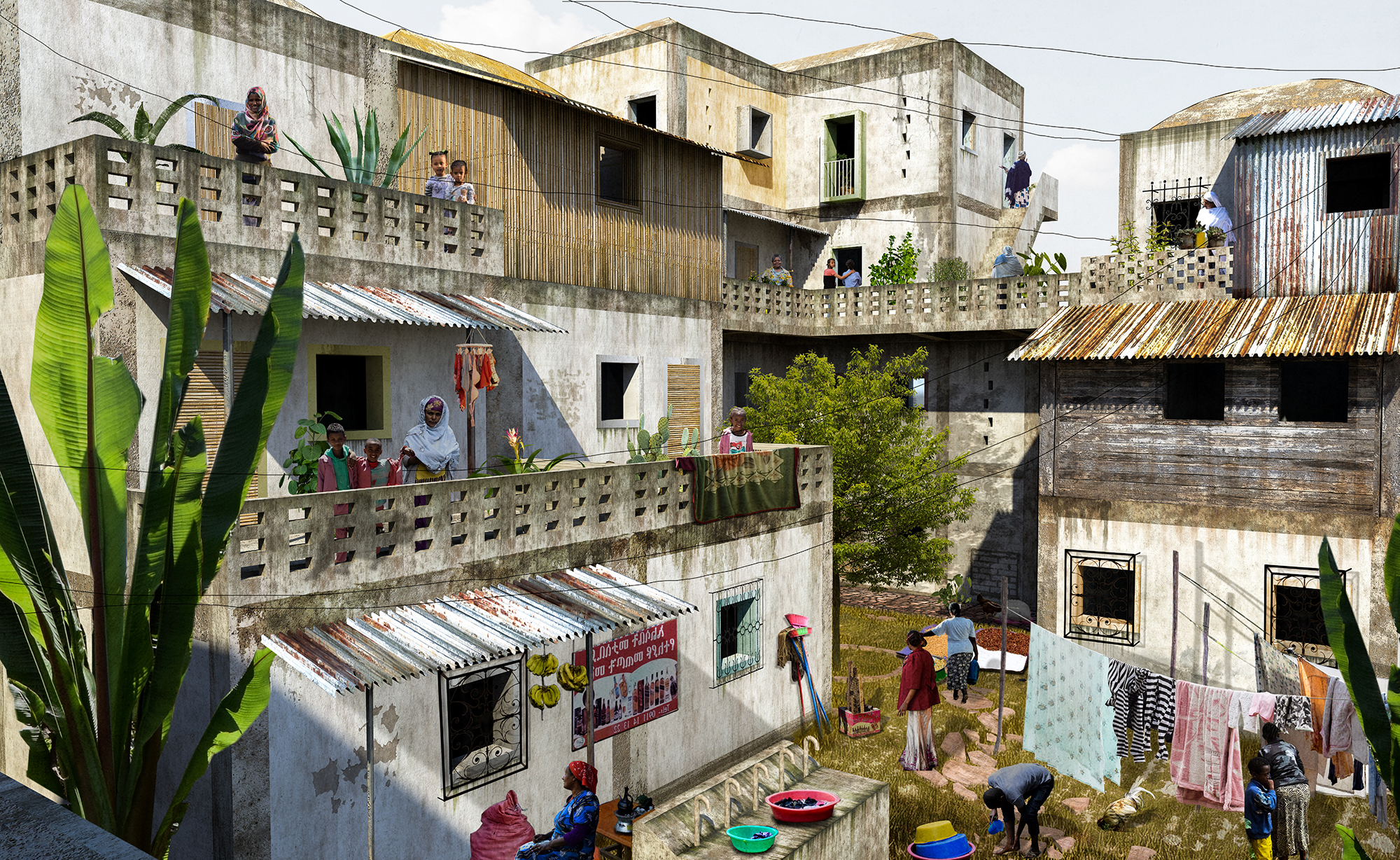
In our project every cluster is independent, allowing the entire project to be built in phases and to develop through time organically integrated in the surrounding physical structures. With this strategy, it avoids disruptive spatial and social breaks between old and new structures and communities. Furthermore, the project can be built using two different construction methods that offer more affordable solutions than those currently used in the governmental housing programme.
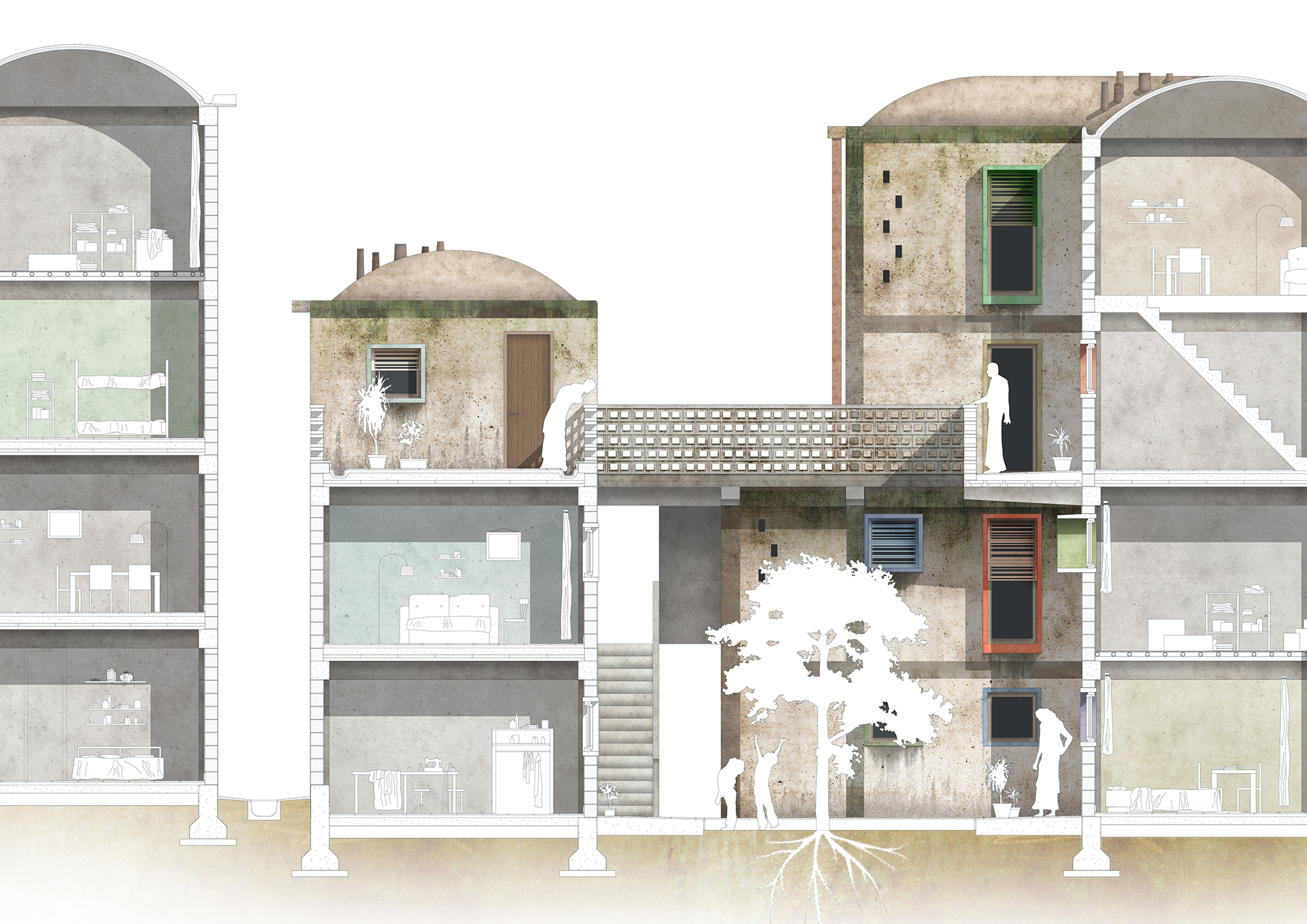
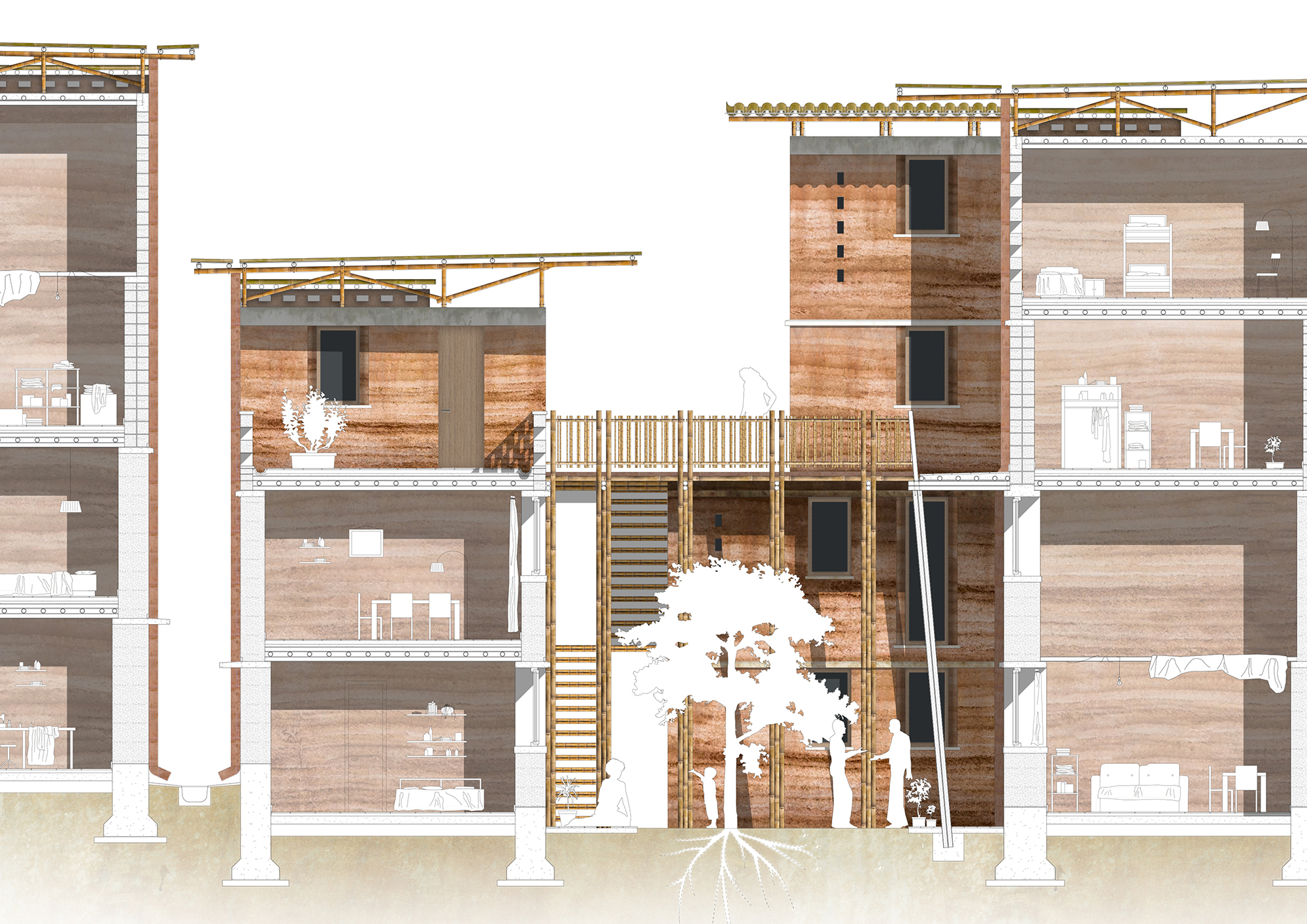
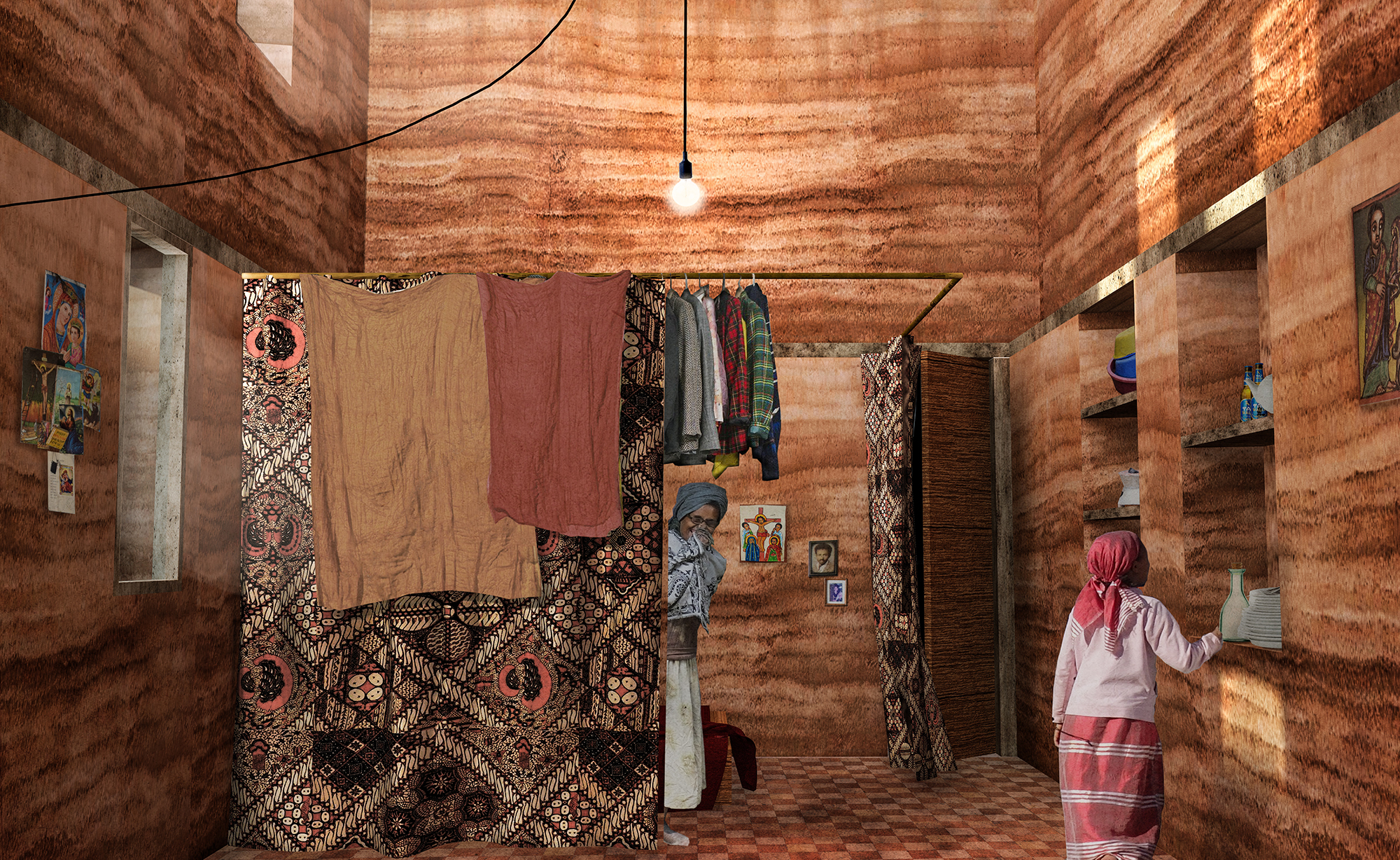
The design approach developed in our project makes it a feasible and competitive alternative approach to the condominium blocks in matters such as cost, time, labour and skills.
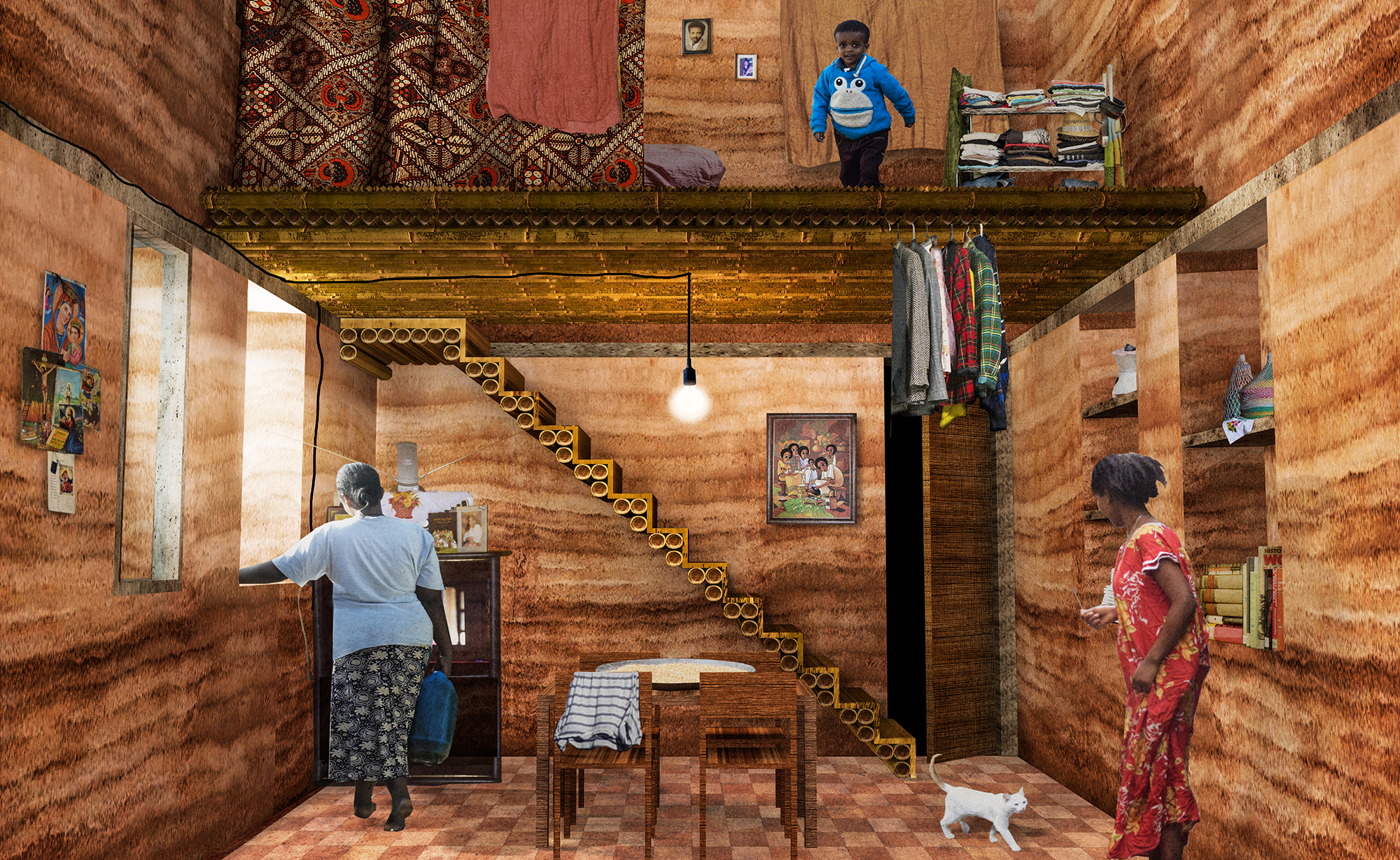
In botany, Rhizome is associated to the growth of the plants’ underground roots. Likewise, our project stands for a continuously growth of an interconnected sequence of spaces that stems from a unique simple element: the residential compound.
References
Abrams, C. (1964). Housing in the modern world. Faber.
Alemayehu, E. Y. (2008). Revisiting" Slums", Revealing Responses: Urban upgrading in tenant-dominated inner-city settlements, in Addis Ababa, Ethiopia.
Aravena, A. (2014). My architectural philosophy. Bring the community into the process, TEDGlobal.
Correa, C. (1987). Belapur Housing. In H.-U. Khan (Ed.), Charles Correa (pp. 70-75). Singapore: Concept Media Ltd.
Davis, Mike. "Planet of slums." New Perspectives Quarterly23.2 (2006): 6-11.
Delz, S. (2016). Ethiopia's Low-Cost Housing Program–How Concepts of Individual Home-Ownership and Housing Blocks Still Walk Abroad. In No Cost Housing Conference. ETH Zürich.
Ecochard, M. (1955). Casablanca: le roman d'une ville. Ed. de Paris.
Hebel, D.E., Moges, M., & Gray, Z. (Eds.). (2016). SUDU. Berlin, Germany: Ruby Press.
Kohler, M. (2016). Superlofts. Retrieved from http://superlofts.co/en
MacGuirk, J. (2011). PREVI: the Metabolist utopia, architecture report from Lima. Domus Magazine.
R Stott. (2013, August 8). VIDEO: 40 Years On, The Lessons of PREVI [weblog post]. Retrieved from https://www.archdaily.com/421490/video-40-years-on-the-lessons-of-previ
UN-HABITAT. (2010). The Ethiopia Case of Condominium Housing: The Integrated Housing Development Programme. United Nations Human Settlements Programme: Nairobi.